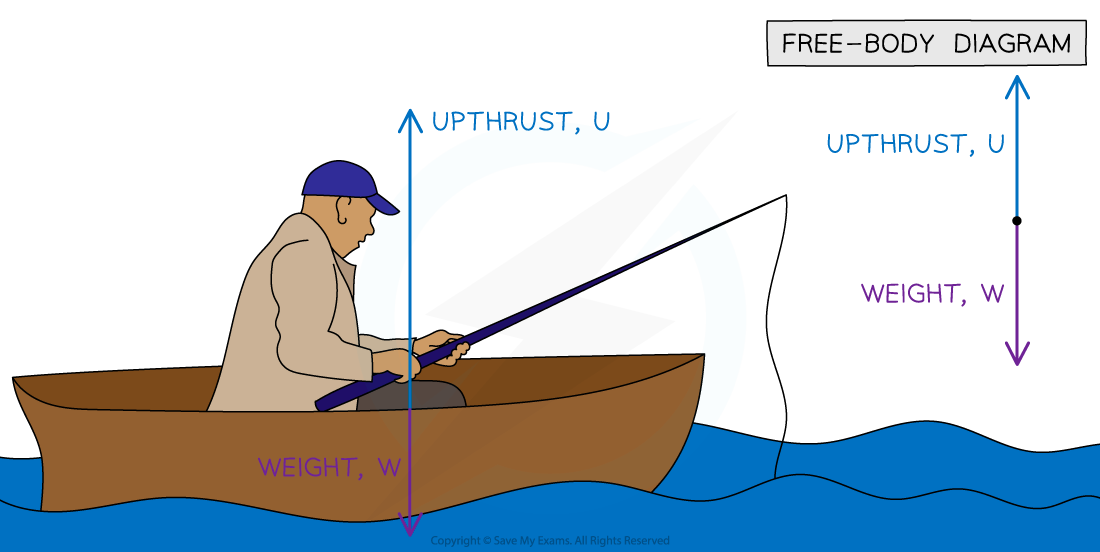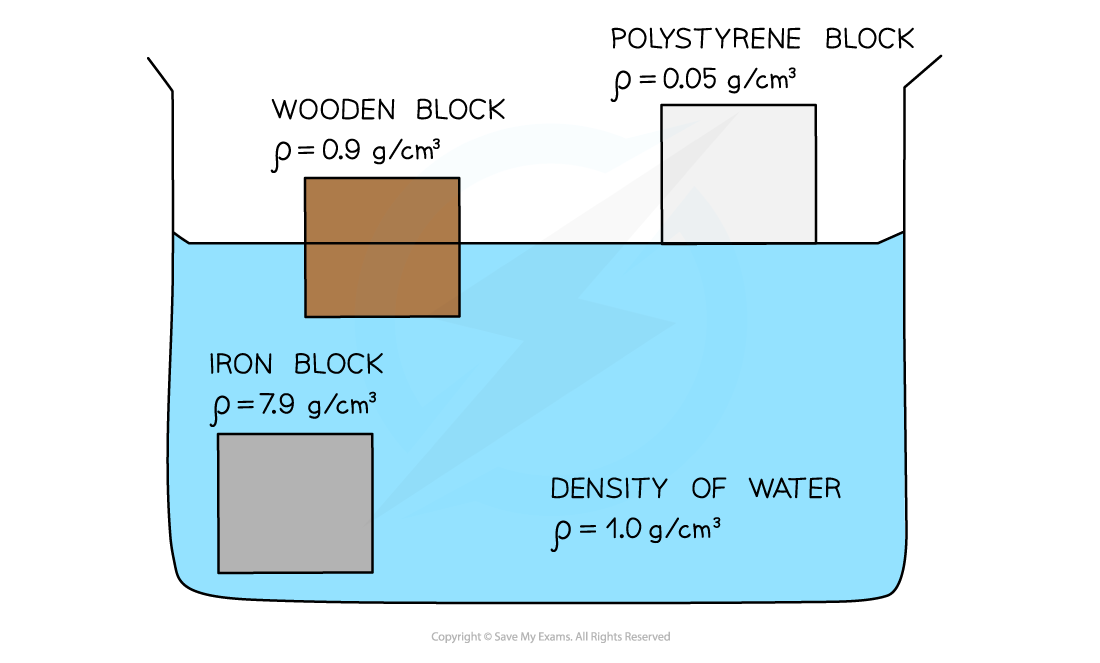Floating & Sinking (OCR GCSE Physics A (Gateway)) : Revision Note
Floating & Sinking
Higher Tier Only
Upthrust
Upthrust is a force that pushes upwards on an object submerged in a fluid i.e. liquids and gases
It is always in the opposite direction to the object's weight
This is why boats, and objects that are less dense than water, float
The size of the upthrust depends on the density of the fluid as well as the volume of fluid that is displaced (which is equal to the volume of the object)
The denser the liquid, the greater the upthrust it will exert on an object

Upthrust is in the opposite direction to the weight of the boat and the fisherman
Factors Affecting Floating & Sinking
Whether an object sinks or floats depends on the upthrust:
If the upthrust on an object is equal to (or greater than) the object’s weight, then the object will float
If the upthrust is smaller than the weight then the object will sink
The outcome also depends on the object's density:
If it has a density less than the density of the fluid it is immersed in, the object will float
If it has a density more than the density of the fluid it is immersed in, the object will sink
This is because if the density of the object is greater than the density of the fluid, the object can never displace enough fluid to create an upthrust that will hold its weight up (and therefore sinks)

Objects which are less dense than water will float and which are more dense will sink
A polystyrene block will float in water
This is because polystyrene has a density of 0.05 g/cm3 which is much less than the density of water (1.0 g/cm3)
A wooden block will be partially submerged but will still float
This is because the density of a wooden block (0.9 g/cm3) is slightly less than the density of water
An iron block will sink
This is because iron has a density (7.9 g/cm3) that is much higher than water

You've read 0 of your 5 free revision notes this week
Sign up now. It’s free!
Did this page help you?

